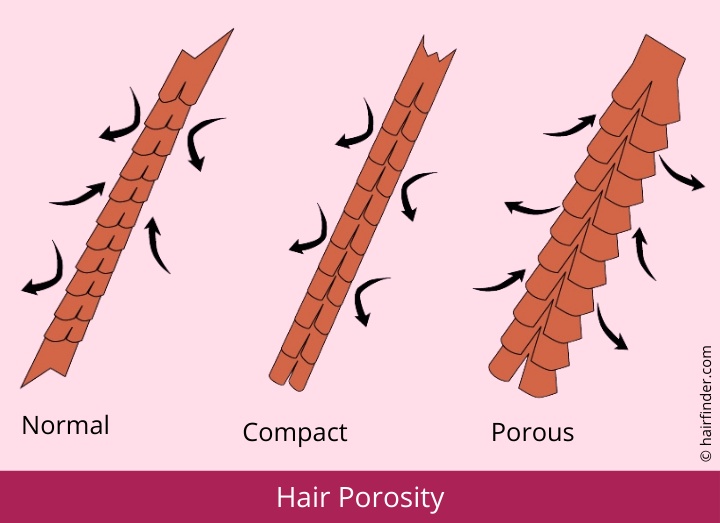Hair porosity is your hair’s ability to absorb and retain moisture (i.e. water). Retaining moisture is the key to healthy hair. In order to properly care for your hair, understanding your hair’s porosity is a pre-requisite.

There are three types of porosity: low, high and normal. Porosity is determined by the position of the cuticle, which is the outermost part of our hair made up of a layer of overlapping dead cells. It provides the hair with strength by protecting it from harsh elements and by protecting the inner structures of the hair. It also controls the water content.


Normal porosity
If you have normal porosity, consider yourself lucky. Normal porosity hair requires the least amount of maintenance. It easily draws in water, however does not allow too much water to enter the cortex. This type of hair tends to be shiny, hold styles well and is easy to process (e.g. color, highlight, perm). A occassional deep conditioner and light protein benefits this type of hair.
High porosity
Think of your hair as a sponge. It can absorb its weight in water and easily allow all the water to escape. Cuticles of high porosity hair are too open and allow too much water to enter the cortex. However, just as easily as the water enters, it also escapes rapidly, making it a challenge to keep moisture. This type of hair may be damaged, because of chemical processing. High porosity hair benefits from heavy creams, thick oils or emollients and butters, to seal in moisture. It also benefits from routine protein treatments, which may help to fill in some of the gaps in the cuticle. Additionally, cold water rinses, low PH products such as diluted vinegar or aloe vera, help to seal the cuticle.
Low porosity (lo-po)
The focus of this blog will be on low porosity. Despite the plethora of information on the web about porosity, there are not enough sites that thoroughly discuss caring for low porous hair. This type of hair has flat, shingled cuticles. Picture the shingles on the roof of a house, when it rains the water simply glides off the structure. As you can imagine, it’s challenging for water to enter the hair shaft. This type of hair often takes a while to wet in the shower and it takes forever to dry. Product buildup is a common complaint, as products just seem to sit on top of the hair. Chemical processing is long and difficult.
The trick with low porosity hair is getting the moisture in the hair shaft. Once it’s in, the hair retains moisture quite well and is lustrous and shiny. One of the most helpful methods is deep conditioning with heat or steam to open up the cuticle and help the hair absorb moisture. Additionally, washing and rinsing the hair with warm water helps loosen up debris and open up the cuticles.
If you’re low porosity and looking for some useful tips and advice, well, you’ve come to the right place. This blog will be dedicated to lo-po hair and more methods for caring for lo-po hair will be discussed in detail on this blog. I’ll also include my experimentation with my lo-po hair and what works and does not work for me.
In the meantime, to find out the porosity of your hair. You could take a clean, freshly washed (without products) strand of hair and place it in a cup of water:
If the hair stays afloat for a long time (more than 1 hour), without ever sinking, you’re likely lo-po
If the hair immediately sinks to the bottom of the glass, you’re likely high porosity
Keep in mind, this is not a glass half empty or half full matter. Whether high, low or normal, the important is figuring out how to properly care for your hair. What’s your hair porosity?
I'm a low po diva and proud of it.
:)

No comments:
Post a Comment